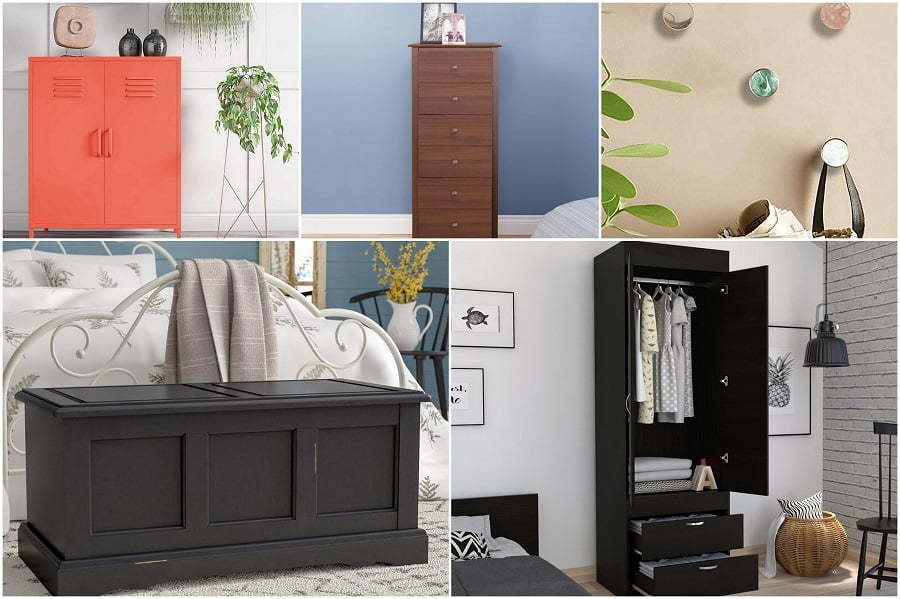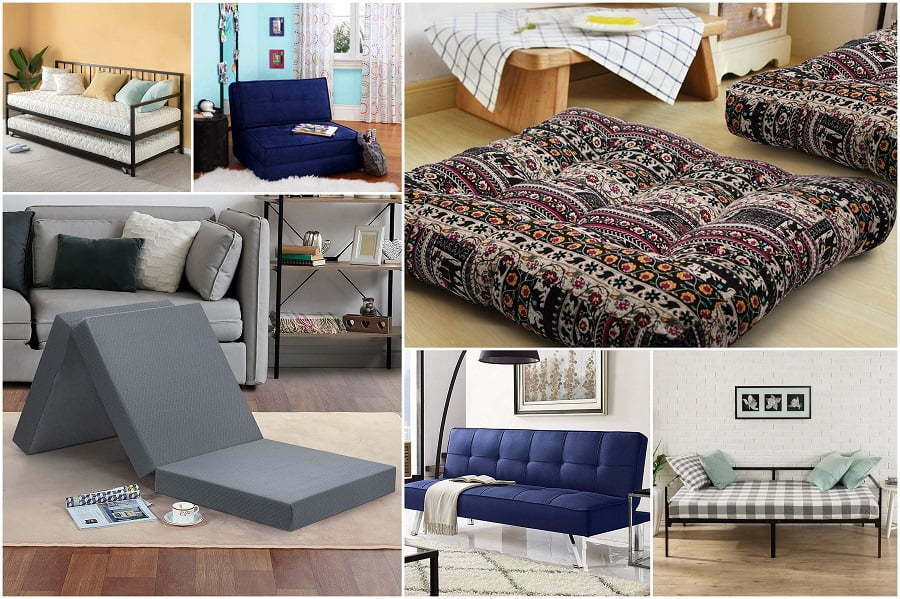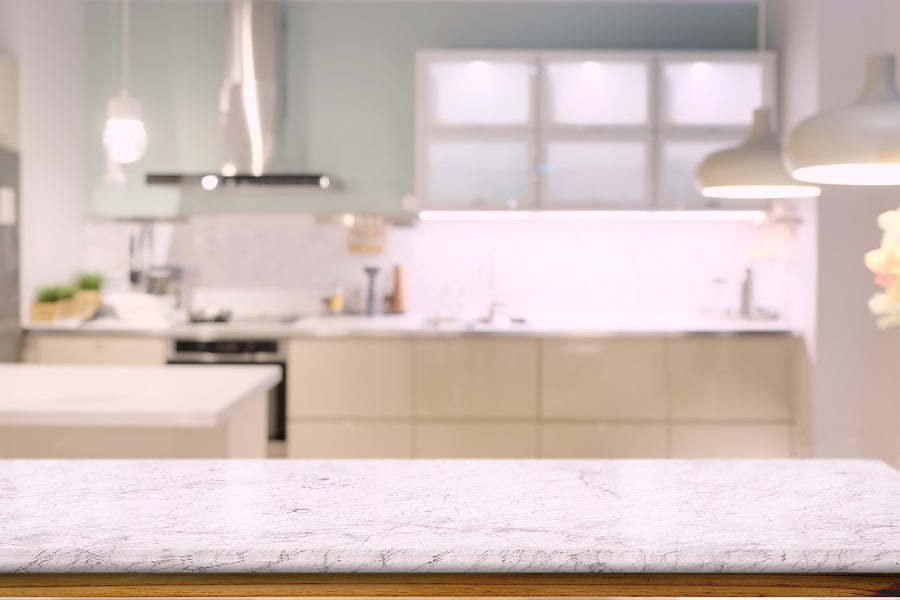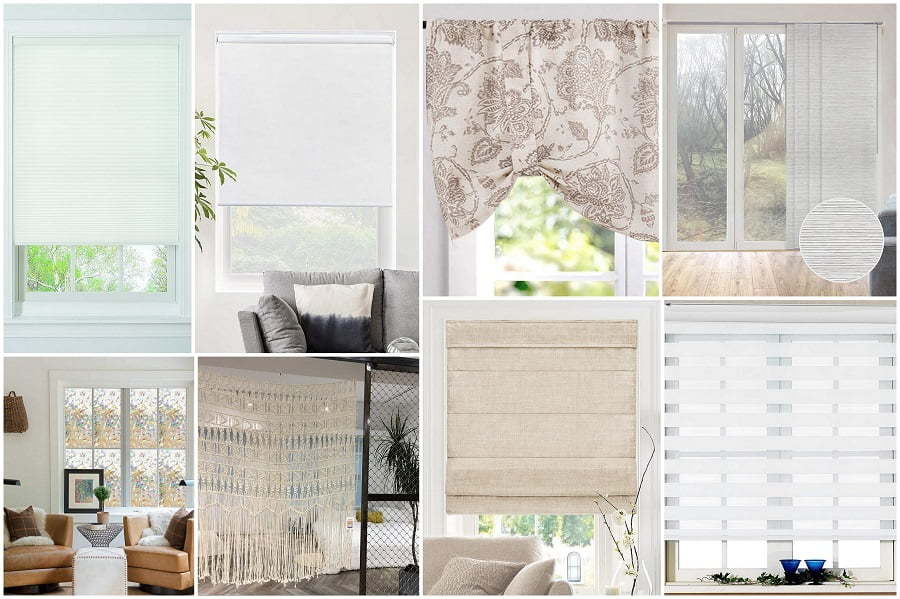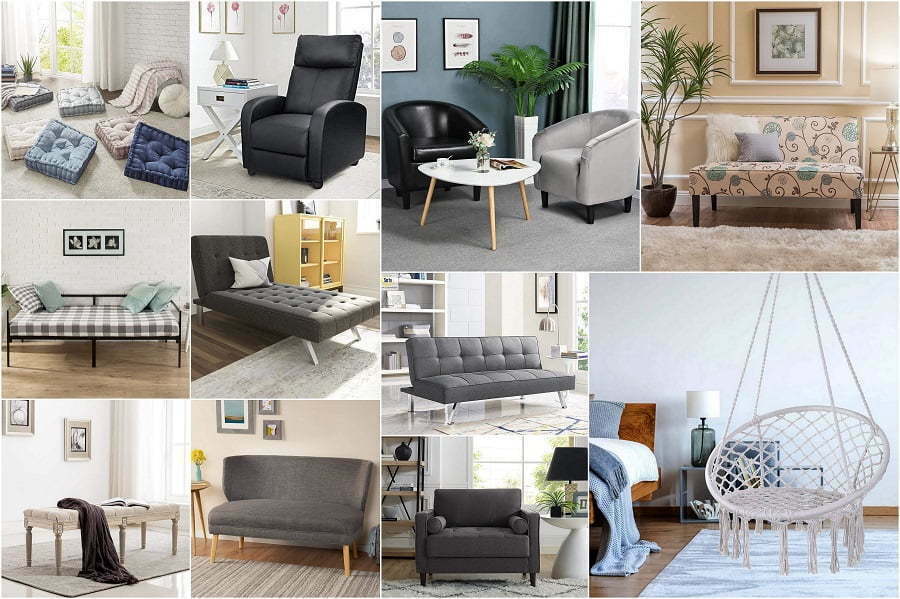Last updated on
Transform your living room into a cinematic experience with these low-cost home theater alternatives.
People invest in expensive home theater systems to create the ultimate movie-watching experience. While these setups can be impressive, they’re not always practical or budget-friendly.
That’s why I’ve compiled a list of 20 alternative ideas for creating a home theater that won’t break the bank. From DIY projector screens to cozy seating arrangements, each idea has its own unique advantages and disadvantages that I’ll explore in detail.
So whether you’re looking to upgrade your current setup or create a new one from scratch, read on for some creative and affordable inspiration!
Soundbars
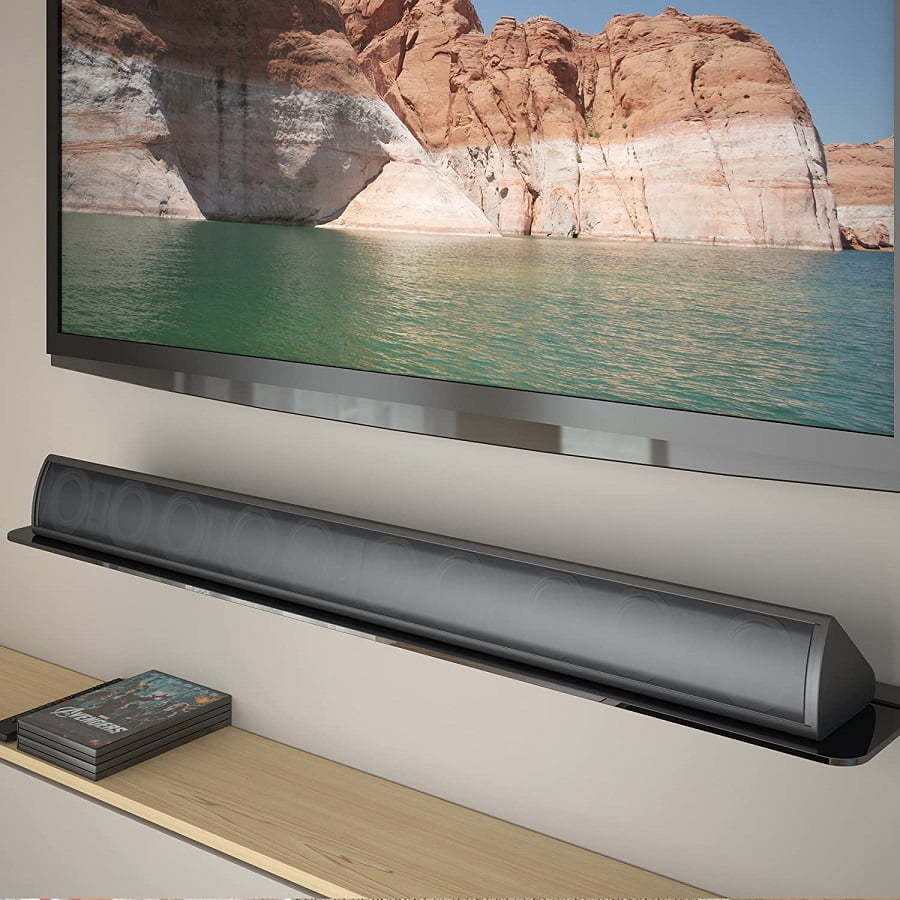
Soundbars are a popular alternative to traditional home theater systems. They are sleek, compact and easy to install.
Soundbars come in different sizes and shapes, making them suitable for any room size or decor style.
Advantages of soundbars include their affordability compared to full home theater systems, as well as their simplicity in terms of setup and use. Many models also offer wireless connectivity options such as Bluetooth or Wi-Fi.
However, one disadvantage is that they may not provide the same level of immersive audio experience that a full surround sound system can offer. Some lower-end models may have limited features or lack bass depth.
Overall though, if you’re looking for an affordable way to enhance your TV’s audio quality without sacrificing too much space or money on a full-blown home theater system – then investing in a good quality soundbar could be the perfect solution!
Projectors

When it comes to creating a home theater experience, projectors are a popular alternative to traditional televisions. Projectors offer larger screen sizes and can be more cost-effective than purchasing a large TV. However, there are some disadvantages to consider as well.
Advantages of using projectors include the ability to create an immersive viewing experience with larger screen sizes up to 300 inches or more. They also tend to be less expensive per inch of screen size compared with TVs.
On the other hand, one disadvantage is that projectors require darker rooms for optimal viewing quality due to their lower brightness levels compared with TVs. They may require additional equipment such as screens and mounting hardware which can add extra costs.
If you have a dedicated space for your home theater and want an immersive viewing experience without breaking the bank on a large TV purchase, then investing in a projector could be worth considering among other alternatives available out there!
Wireless Speakers

Wireless speakers are a popular alternative for home theater systems. They offer the convenience of not having to deal with wires and cables, which can be a hassle to set up and manage.
With wireless speakers, you can easily connect your devices via Bluetooth or Wi-Fi and enjoy high-quality sound without any cords getting in the way.
One advantage of wireless speakers is their portability. You can move them around your home as needed, making it easy to create different listening environments depending on your mood or activity.
Many models come with rechargeable batteries that allow you to use them outside or in areas where there’s no power outlet nearby.
However, one disadvantage of wireless speakers is that they may not provide the same level of audio quality as wired ones due to signal interference issues caused by distance from source device or other electronic equipment nearby. Also some models may have limited range which means if you want music throughout an entire house then multiple units will need purchased.
Gaming Consoles

Gaming consoles are a popular alternative for creating a home theater experience. With the ability to stream movies and TV shows, as well as play video games, gaming consoles offer versatility in entertainment options.
One advantage of using a gaming console is that it can be used with any TV or monitor that has an HDMI port, making it easy to set up in any room of the house. Many modern gaming consoles have built-in streaming services such as Netflix and Hulu.
However, one disadvantage is that not all games or streaming services may be available on every console. It’s important to research which console offers the specific features you’re looking for before making a purchase decision.
Another potential downside is cost; while some older models may be affordable options for those on a budget, newer models can come with hefty price tags.
Streaming Devices
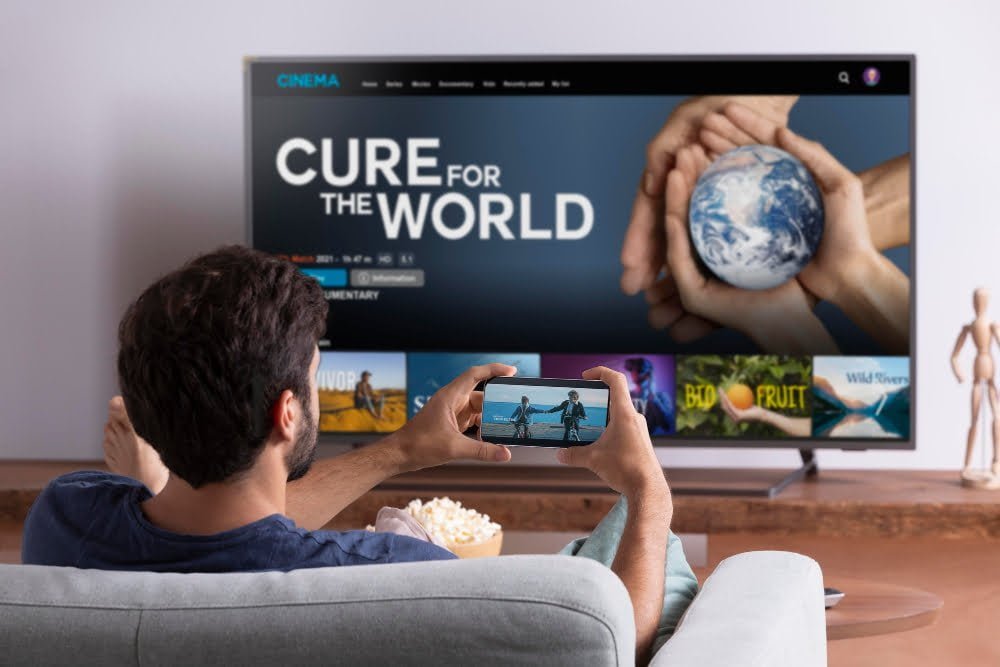
Streaming devices allow you to access streaming services like Netflix, Hulu, and Amazon Prime Video directly from your TV.
Some of the most popular streaming devices include Roku, Apple TV, Chromecast and Amazon Fire Stick.
Advantages: One of the biggest advantages of using a streaming device is that they are relatively inexpensive compared to traditional home theater systems. They offer easy setup and installation with no need for complicated wiring or professional installation services.
Disadvantages: While these devices provide access to many different types of content at an affordable price point, their audio quality may not be as good as more expensive sound systems. Some users have reported occasional buffering issues when trying to stream high-quality video content on slower internet connections.
Virtual Reality Headsets

Virtual reality headsets are a relatively new addition to the home theater scene, but they offer an immersive experience that can’t be matched by traditional setups. With VR headsets, you can feel like you’re right in the middle of your favorite movie or video game.
The advantages of using virtual reality for your home theater include the ability to customize your viewing experience and enjoy content in 3D without needing a separate TV or projector setup. However, there are also some disadvantages to consider before investing in a VR headset for your home theater.
For one thing, not all content is compatible with virtual reality technology yet – so you may have limited options when it comes to what movies and games you can watch on these devices. Some people may find wearing a bulky headset uncomfortable after extended periods of time – which could detract from their overall enjoyment of the experience.
Outdoor Movie Screens

Outdoor movie screens are becoming increasingly popular, and for good reason.
They offer a unique experience that cannot be replicated indoors.
Advantages:
- The outdoor setting creates an immersive experience that transports you into the world of the film.
- You can invite friends and family over for a fun night out without having to leave your home.
- It’s perfect for warm summer nights when you want to spend time outside.
Disadvantages:
- Weather can be unpredictable, so rain or wind could ruin your plans.
- Depending on where you live, bugs may become an issue during screenings.
- Setting up an outdoor screen requires more equipment than simply using your TV or projector indoors.
If weather permits and with proper planning in place (such as bug repellent), hosting an outdoor movie screening can create unforgettable memories with loved ones while enjoying nature at its finest.
Media Center PCs

Media center PCs are a great alternative for those who want to have a home theater experience without breaking the bank. These computers can be connected to your TV and used as a hub for all of your media needs, including streaming services, music libraries, and even gaming.
One advantage of using a media center PC is that it allows you to customize your setup according to your preferences. You can choose which software or apps you want to use and how they’re arranged on the screen.
However, one disadvantage is that setting up a media center PC requires some technical knowledge. You’ll need to ensure that all hardware components are compatible with each other and configure them properly before use.
If you’re willing to put in some effort into setting up the system correctly, then using a media center PC could be an excellent option for creating an affordable home theater experience with plenty of customization options available at hand!
Smart TVs
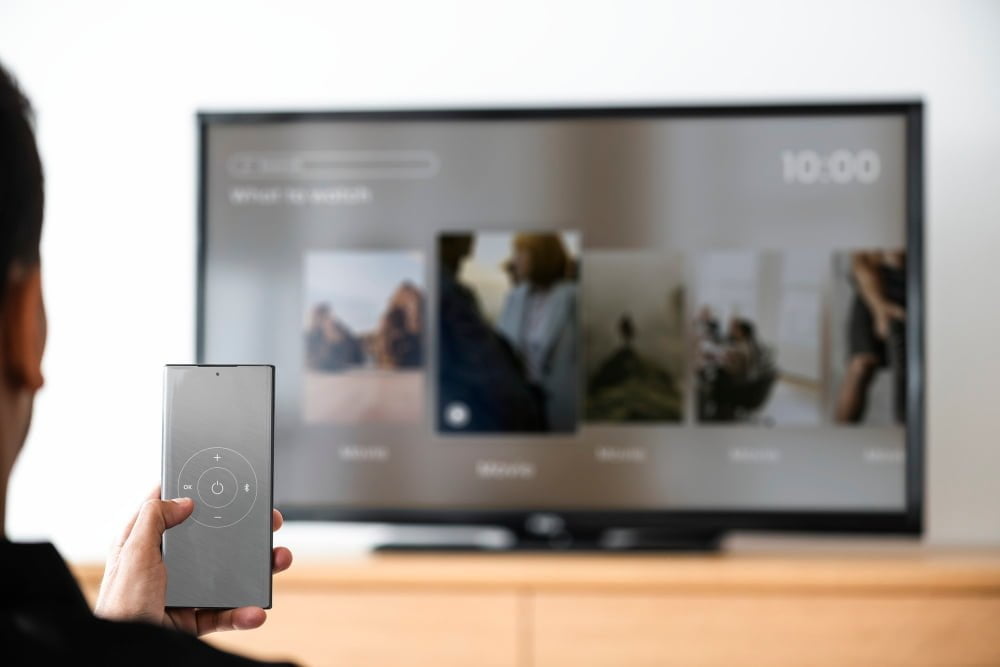
Smart TVs come with built-in internet connectivity and allow you to stream movies, TV shows, and other content directly from the web.
One of the biggest advantages of smart TVs is their convenience – they eliminate the need for additional devices like streaming boxes or game consoles. Many smart TVs offer voice control options that make it easy to navigate through menus without having to use a remote.
However, there are also some disadvantages associated with using a smart TV as your primary home theater setup. For one thing, not all models have high-quality speakers or support for surround sound systems – so if audio quality is important to you then you may need additional equipment such as soundbars or external speakers.
While most modern Smart TVs have large screens that can provide an immersive viewing experience in smaller rooms this might be overwhelming and uncomfortable on your eyesight especially when watching for long periods of time.
Bluetooth Headphones

One of the most common complaints about home theaters is that they can be too loud for other people in the house or neighbors. This is where Bluetooth headphones come in handy.
With a good pair of Bluetooth headphones, you can enjoy your favorite movies and TV shows without disturbing anyone else.
The advantages of using Bluetooth headphones are obvious: you get to enjoy your entertainment at a volume that suits you without bothering others. Some models offer noise-cancellation features which further enhance your viewing experience by blocking out external sounds.
However, there are also some disadvantages to consider when using Bluetooth headphones with your home theater system. Firstly, not all TVs have built-in support for connecting wireless devices like these types of headsets; therefore an additional adapter may be required which could add extra costs to the setup process.
Secondly, while many modern wireless headphone models offer excellent sound quality and battery life performance – it’s important to note that this technology still has limitations compared with wired options such as latency issues (delay between audio and video) or potential interference from other nearby devices operating on similar frequencies.
Portable Projectors
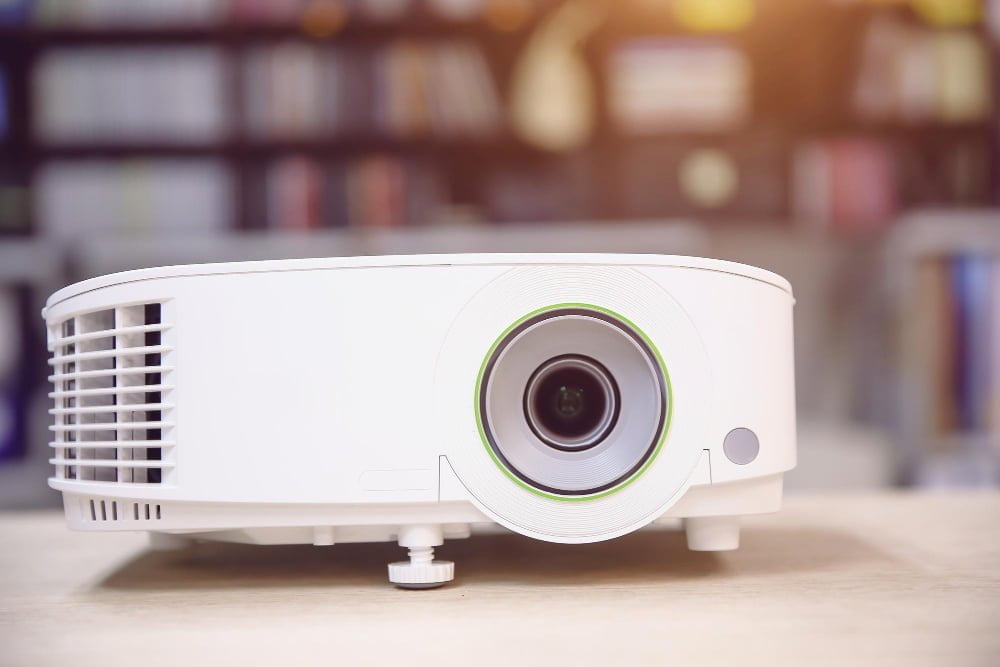
Portable projectors are a great alternative to traditional home theater setups. They offer the flexibility of being able to move them from room to room or even take them outside for movie nights under the stars.
Portable projectors come in various sizes and price ranges, making it easy for anyone on a budget to find one that fits their needs.
One advantage of portable projectors is their compact size, which makes them easy to store when not in use. They can be set up quickly and easily without any complicated installation processes.
However, there are also some disadvantages associated with portable projectors. The image quality may not be as good as larger fixed installations due to lower brightness levels and resolution limitations.
Also, ambient light can affect the picture quality if you’re using it outdoors or in brightly lit rooms.
Multi-room Audio Systems
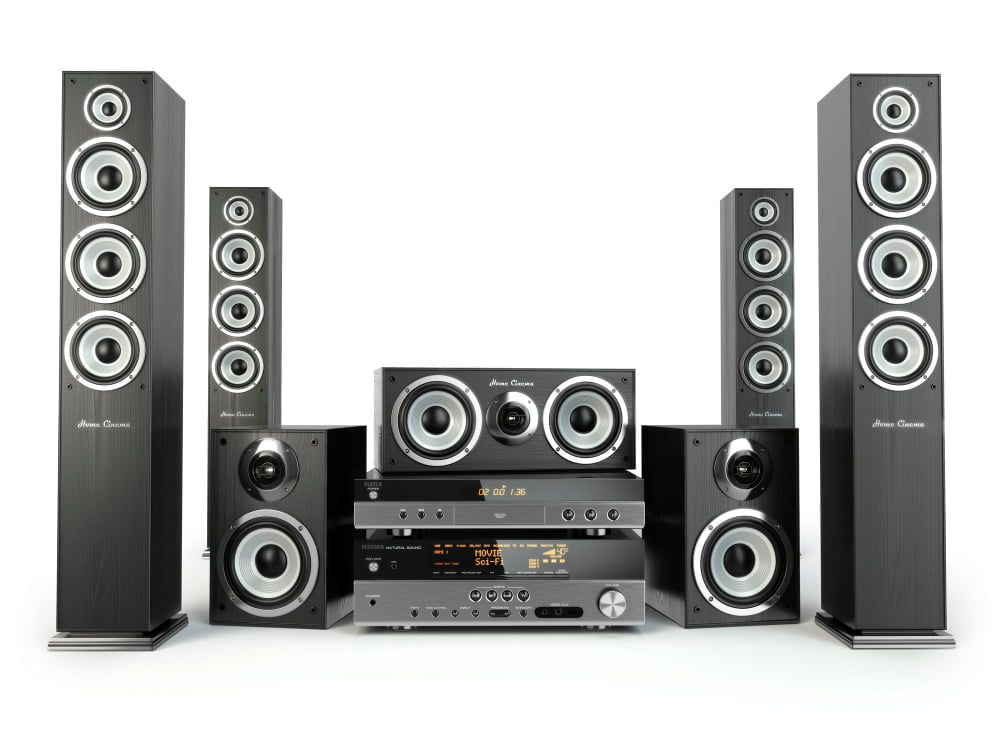
Multi-room audio systems are a great way to enhance your home theater experience. With this system, you can enjoy high-quality sound throughout your entire house.
Multi-room audio systems allow you to play music or other audio content in different rooms simultaneously or independently.
One of the advantages of multi-room audio systems is that they offer flexibility and convenience. You can control the system from a central location using an app on your smartphone or tablet, making it easy to switch between rooms and adjust volume levels.
However, one disadvantage is that these systems can be expensive depending on the number of speakers and components needed for installation. Some homeowners may find it challenging to install these complex setups themselves without professional help.
If you’re looking for an immersive home theater experience with high-quality sound throughout multiple rooms in your house, then investing in a multi-room audio system might be worth considering despite its potential drawbacks.
Bookshelf Speakers
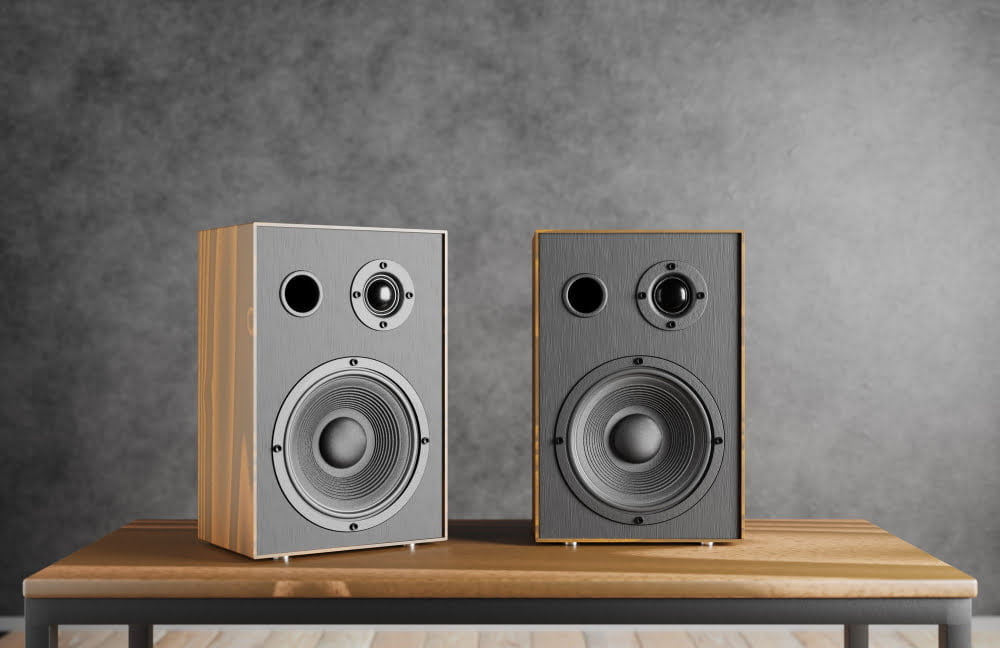
Bookshelf speakers are a popular choice for home theater enthusiasts who want to enjoy high-quality sound without breaking the bank. These compact speakers can be placed on bookshelves, desks, or stands and offer excellent sound quality for their size.
One of the advantages of bookshelf speakers is that they are relatively affordable compared to larger floor-standing models. They also take up less space in your room and can be easily moved around if needed.
However, one disadvantage of bookshelf speakers is that they may not provide enough bass response for some listeners. This means you may need to pair them with a subwoofer or choose a model with built-in bass drivers if you want more low-end punch in your audio experience.
Because these smaller speakers have limited power handling capabilities, they may not be suitable for very large rooms where higher volumes are required.
Mini LED Projectors
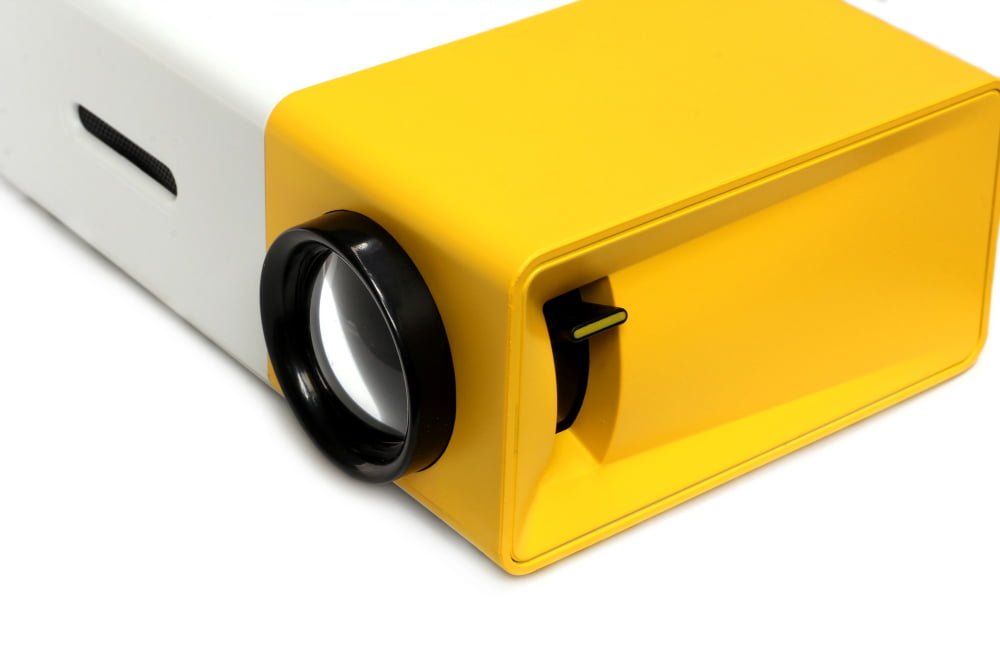
Mini LED projectors are a great alternative to traditional home theater setups. They are small, portable, and can be easily set up in any room of the house.
One advantage of mini LED projectors is their affordability compared to larger home theater systems. They also offer flexibility in terms of placement and can be used for outdoor movie nights or presentations.
However, one disadvantage is that they may not provide the same level of image quality as larger projectors or TVs. Some models may have limited brightness which could affect viewing experience in well-lit rooms.
Mini LED projectors are a cost-effective option for those looking to create a simple yet enjoyable home theater experience without breaking the bank.
Roku TV
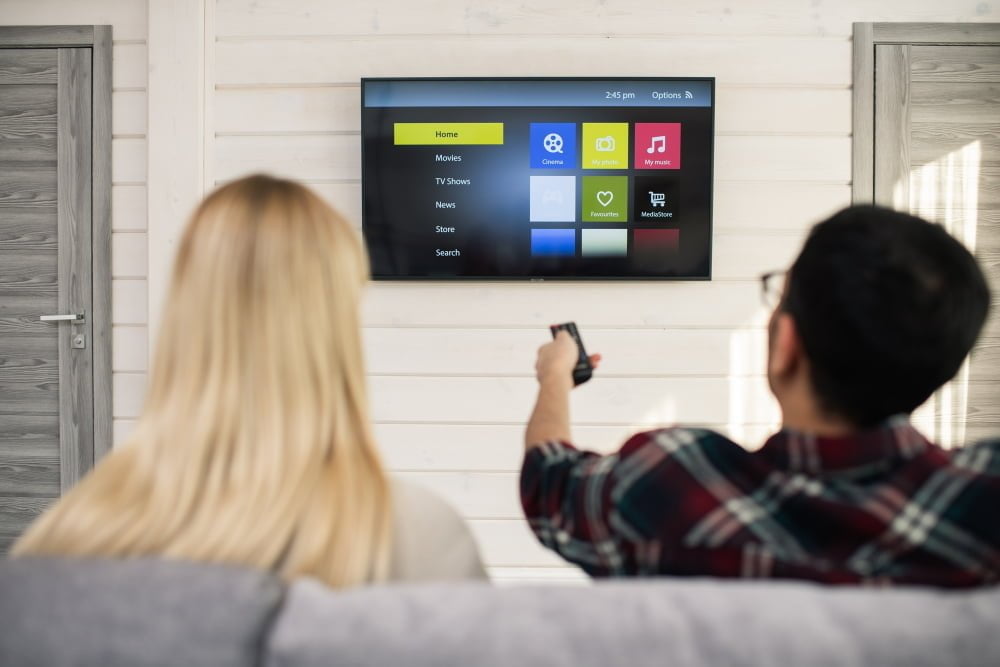
Roku TV allows you to stream movies, TV shows, and other content directly to your television without the need for a separate streaming device.
One advantage of Roku TV is its affordability; it’s much cheaper than buying a traditional home theater system. It’s easy to set up and use with an intuitive interface that even non-tech-savvy individuals can navigate.
However, there are also some disadvantages to consider when using Roku TV as your primary home theater alternative. For one thing, you’ll need a reliable internet connection in order for it to work properly – if your internet goes out or slows down significantly during peak usage times (like evenings), then streaming quality may suffer or become interrupted altogether.
Another potential downside is that while there are many channels available on Roku (including popular ones like Netflix and Hulu), not all content may be available depending on where you live or what subscription services you have access too – so make sure before purchasing this option that everything will be accessible!
Amazon Fire Stick

Amazon Fire Stick is a small device that plugs into your TV’s HDMI port and allows you to stream movies, TV shows, and music from various apps such as Netflix, Hulu, Prime Video, and more.
The advantages of using an Amazon Fire Stick include its affordability (starting at $39), ease of use with a simple remote control or voice commands through Alexa integration, and access to thousands of entertainment options without needing cable or satellite subscriptions.
However, there are also some disadvantages to consider when using an Amazon Fire Stick for your home theater setup. One major drawback is that it requires a stable internet connection with high-speed data transfer rates in order to avoid buffering issues during streaming sessions.
While many popular streaming services are available on the platform there may be some content that isn’t available due to licensing restrictions or regional limitations.
Google Chromecast

This small device plugs into your TV’s HDMI port and allows you to stream content from your phone, tablet, or computer directly onto the big screen.
One advantage of using Chromecast is its ease of use. Simply connect it to your TV and Wi-Fi network, download the app on your mobile device or laptop, and start streaming.
It also supports a wide range of apps such as Netflix, Hulu, YouTubeTV among others.
However one disadvantage is that it requires an internet connection which may not be reliable in some areas leading to buffering issues during playback. Additionally there are limited controls available through Chromecast itself so you will need another device like a smartphone or tablet for navigation.
Apple TV
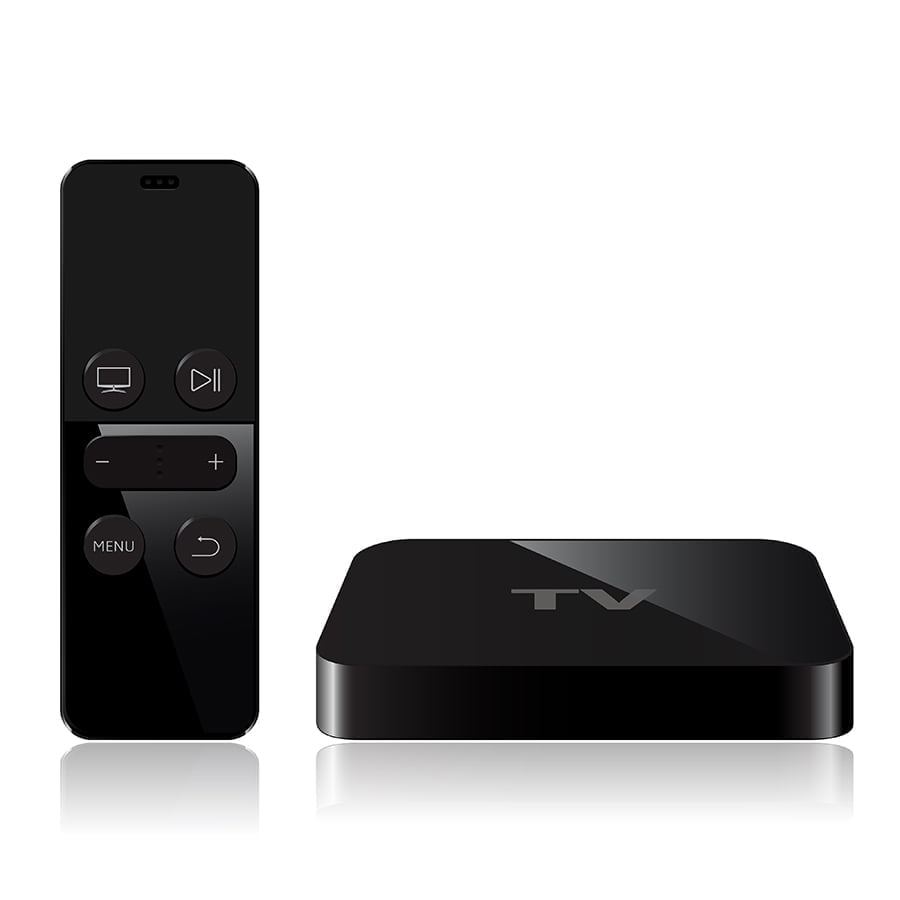
This device allows you to stream movies, TV shows, and music from various sources such as Netflix, Hulu Plus, iTunes Store and more.
One of the biggest advantages of using Apple TV is its ease-of-use; it’s simple to set up and navigate through menus with a remote control or even your iPhone.
Another advantage is that it offers high-quality video streaming with 4K HDR support for compatible TVs. However, one disadvantage could be that some content may not be available in certain regions due to licensing restrictions.
While there are no monthly fees associated with owning an Apple TV device itself (aside from any subscription services you choose), purchasing or renting individual movies or shows can add up quickly if you’re a frequent viewer.
NVIDIA Shield
One of the most popular home theater alternatives is the NVIDIA Shield. This device allows you to stream movies, TV shows, and games in 4K HDR quality with Dolby Atmos sound.
It also has built-in Google Assistant for voice control and access to thousands of apps through Google Play Store.
One advantage of using NVIDIA Shield as a home theater alternative is its versatility. You can use it not only for streaming but also for gaming and even as a smart home hub.
Another advantage is its compatibility with various streaming services such as Netflix, Amazon Prime Video, Hulu, YouTube TV, Disney+, among others.
However, one disadvantage of using NVIDIA Shield is that it requires an internet connection to work properly which may be problematic if your internet speed or connectivity isn’t reliable enough. The cost might be higher than other options on this list depending on what version you choose.
DIY Home Theater Setups
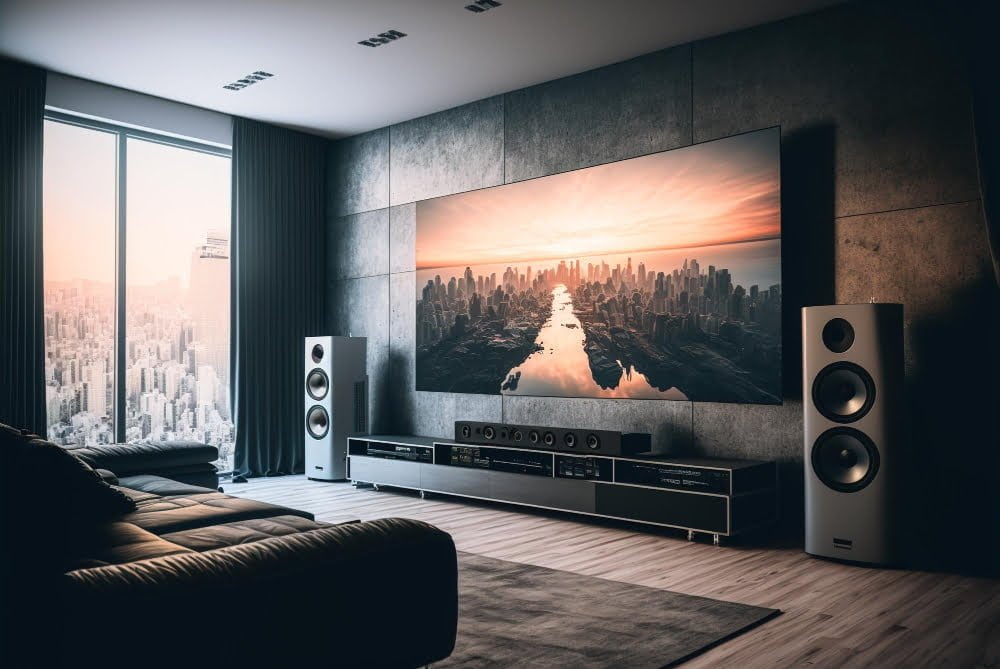
When it comes to creating a home theater, DIY setups can be an excellent alternative for those on a budget. With some creativity and resourcefulness, you can transform any room into your own personal cinema.
One advantage of DIY home theater setups is that they allow you to customize the space according to your preferences. You have complete control over the design and layout of the room, which means you can create a unique experience tailored specifically for your needs.
However, there are also some disadvantages to consider when going down this route. For one thing, setting up a DIY home theater requires more effort than simply buying pre-made equipment or hiring professionals.
You’ll need to do research on what components are necessary (such as projectors or sound systems), purchase them separately from different vendors if needed and then install everything yourself.
While cost savings may be significant with this approach compared with traditional methods like hiring contractors or purchasing pre-built systems outright; it’s important not underestimate how much time will go into planning out every detail before starting construction work – especially if doing so without professional help!
Recap
